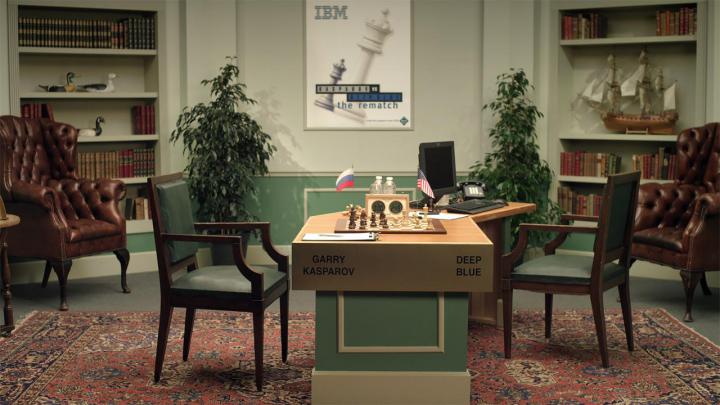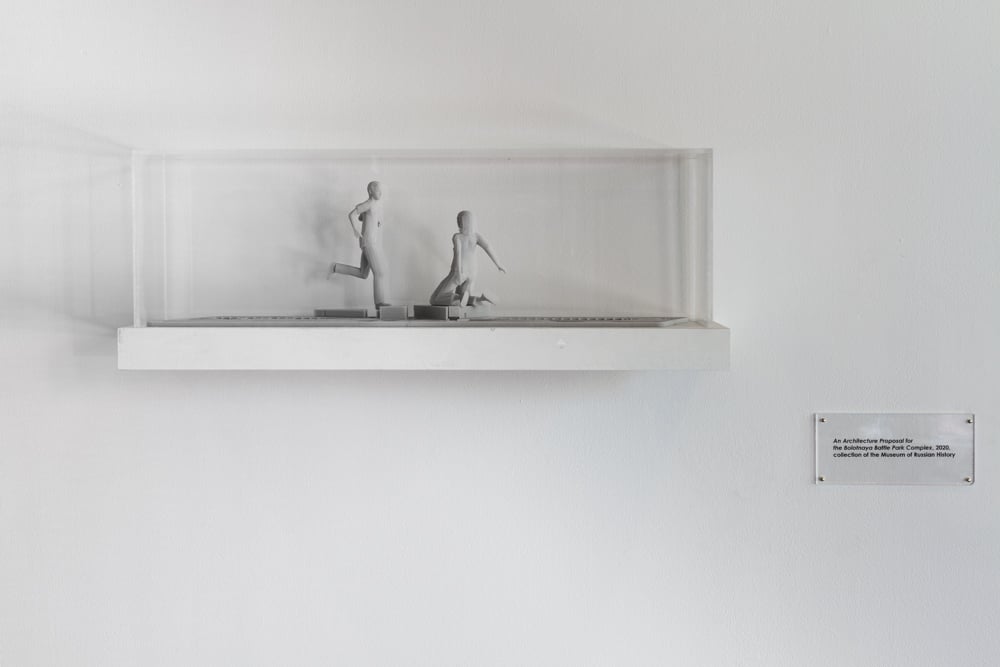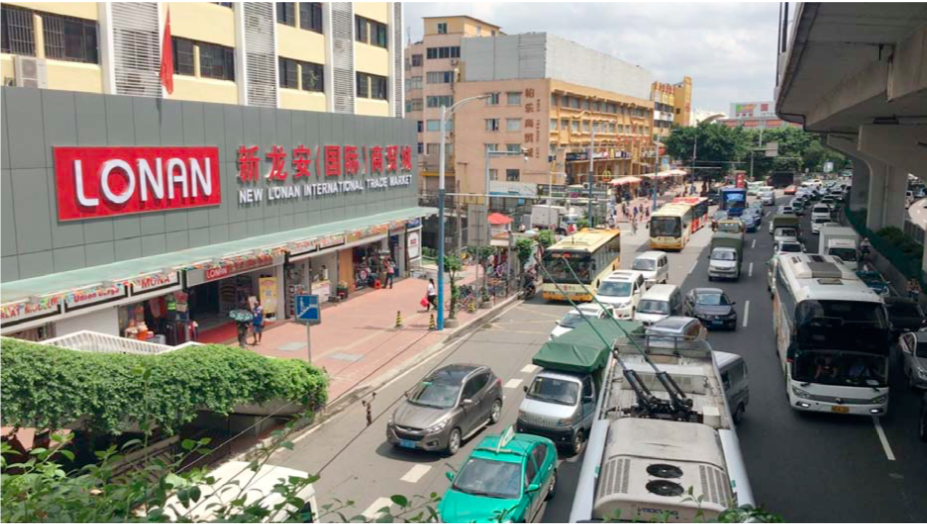
© » KADIST
Xyza Cruz Bacani
Occupy HK 2014 is a series of 18 photographs that Xyza Cruz Bacani’s shot at the height of the Umbrella Movement in Hong Kong. At the time, the Umbrella Movement was considered the largest social unrest defending the democratic aspirations of Hong Kongers, who flooded the streets to demand universal suffrage. The protestors even managed to block Hong Kong’s main highway for months, freezing Asia’s financial centre.

© » KADIST
Khvay Samnang
The video Rubber Man continues exploring issues related to land use, also noticeable in his Untitled series (2011). More specifically, Rubber Man addresses the French colonial legacy of land use for the exploitation of rubber –today exploited by multiple forces such as individuals, governments, multinationals and international banks– and its effects on Cambodia’s indigenous forests and culture today. The video takes place in Ratanakiri, an area in northeastern Cambodia increasingly known in local and international news for land grabs and protests, and where the artist frequently traveled to over two years.

© » KADIST
Shimon Minamikawa
In Play , the image comes from a fashion magazine from the 1950’s (USA) whose theme is costume sportswear from the 19th century. The image was first used in a series involving playing cards which have subsequently gone on to be used in a series of performances. There is cultural contextual displacement and confusion which is presented in the work which embodies the sense of – Play – that was introduced into Shimon’s work.

© » KADIST
Paul Czerlitzki
In this painting made in 2014, which is part of a series started in 2013, the artist dismantles the traditional painting process. Putting aside any formal intervention, the artist lets the membrane slowly soak up white monochrome paint through a transferring technique before removing it. In some places the structure of the canvas can be seen, while other places of the canvas are purposely blurred to evoke the texture of the material used.

© » KADIST
Ximena Garrido Lecca
Destilaciones ( Distillations , 2014) is an installation composed of a group of ceramic pots, presented on the floor and within a steel structure. Copper pipes run through the perforated ceramics, evoking the design of an oil purifier. The work is a direct reference to the history of the Peruvian coastal town of Lobitos.

© » KADIST
Yang Song
Yang Song’s Die features a clay mask of the artist himself slowly dissolving into water. Clay returns to clay. Clay originates from and returns to earth, becoming a metaphor for life.

© » KADIST
Charles Lim
In SEA STATE 6 Charles Lim takes the viewer down the Jurong Rock Caverns in Singapore, a massive underground infrastructure for oil and fuel storage, built to support the commercial operations of oil traders, petrochemical ventures and manufacturing industries in the area. The first of its kind in Southeast Asia. Located at a depth of 130 meters beneath the Banyan Basin on Jurong Island, the Caverns provide infrastructural support to the petrochemical industry that operates on Singapore’s Jurong Island, a cluster of islets reclaimed into one major island and connected to the mainland in the 1980s.

© » KADIST
Basma Alsharif
Deep Sleep draws from historical avant-garde cinema to produce a poetic, sound-based meditation following brainwave-generating binaural beats. The dreamlike video is filmed among abandoned ruins in Malta, Athens, and Gaza, connecting the three locations in an attempt to convey the experience of being in Gaza from these monumental sites. Colorful flickering lights, sun, earth, stone, rock, sky, and water inundate the scenes, and the rhythmic sounds of waves, chimes, and footsteps remain.
![My work is socially engaged with the art market, [Artoons, 2008–2022 series]](https://kadist.org/wp-content/uploads/2023/09/socially-engaged-with-the-art-market-scaled.jpg)
© » KADIST
Pablo Helguera
Drawing & Print (Drawing & Print)
A sly sense of humor is key in Pablo Helguera’s long-running Artoons series, one that includes ~1500 drawings made over ten years. It’s no secret that the artworld tends to take itself too seriously, so it’s no surprise that Helguera’s project has developed a large following over the past decade—providing much needed comic relief.. Helguera grew up making and exchanging drawings like these with his father and brother, but never made drawing a part of his public practice until in 2008, when he began periodically posting what came to be known as ‘Artoons’ on Facebook. The series caricatures and lampoons agents and events in the artworld, combining just enough visual reference along with a caption.
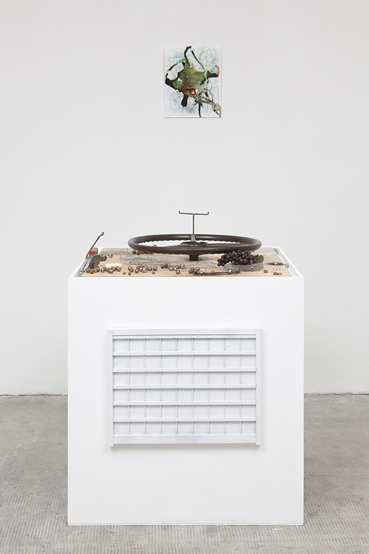
© » KADIST
Uri Aran
Like much of Aran’s work this sculptural installation is akin to a riddle. It has no exact meaning, and it can be somewhat frustrating, yet with careful inspection it begins to reveal unexpected information. In his 2014 exhibition at Peep-Hole, Milan, where this work was shown, Aran referred in a series of new works to Mancala games.

© » KADIST
Gabriel Pericas
“Weight & velocity (cat on router)” is a duo of two humorous photographs of a cat lying on a computer router. The weight of the cat that voluptuously outspreads on the router contrasts with the speed of the information circulating in the object—the two subjects are opposing in their essential existence. In a pragmatic way, the cat stretches on the router for the heat that emerges.

© » KADIST
Shahryar Nashat
In the film Hustle in Hand (2014) we observe secret negotiations carried out between two characters with only their torsos visible in the frame— negotiations that consider fetishizations, meaning and symbolic value of the body and flesh. Money, food, appearances, and consumption: the viewer is pulled into a round of transactions, a rumination on our society in which art occupies a coveted position. The film’s rhythm is suddenly interrupted by the appearance of a green polyhedron that, once licked by one of the mysterious protagonists, becomes golden yellow, a magical event accompanied by an intense swelling of violin music.

© » KADIST
Nicolás Grum
El gran pacto de Chile (The Great Pact) and La balserita de Puerto Gala (The Raft) were part of the “Museo Futuro”, an exhibition in which the artist presented nine miniature dioramas staging fragments of Chile’s history, from its colonial invasions to the present. Through the episodes he chose to depict, the artist focused on historical narratives, the way the story is told, and the supposed irrefutability of historical facts. Museo Futuro (“Future Museum”) stands within a tradition of artists who re-read history and offer their interpretation of it through the distopic lens of the museum display.
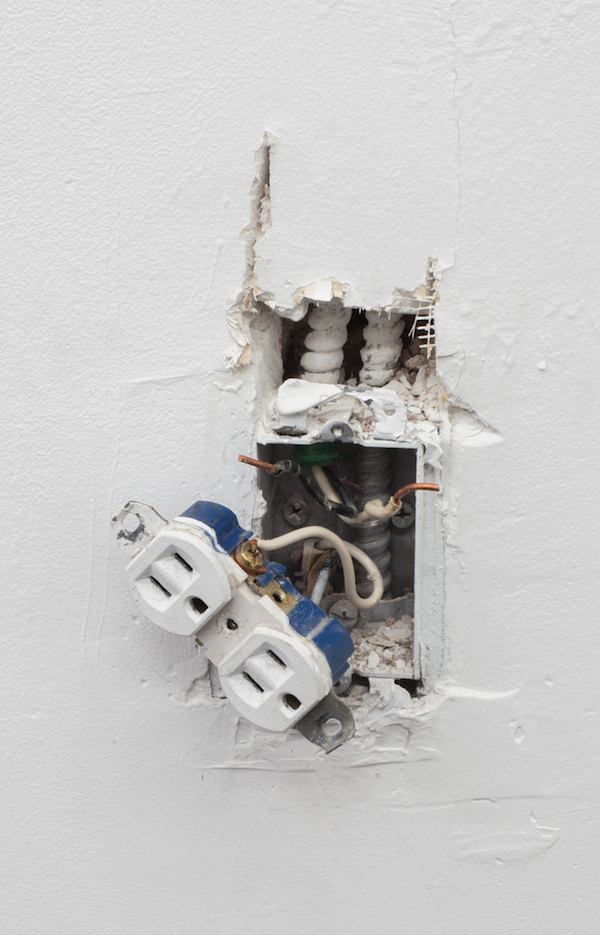
© » KADIST
Cameron Rowland
Rowland’s minimal installations require a focus not on the objects themselves, but on the conditions of their creation, use, and distribution. Who controls the services that contemporary citizens take for granted—like power, water, heat? Who makes these objects that deliver these services?

© » KADIST
David Horvitz
“On April 13 a painting was lost at JFK airport while going through the security screening. On April 19 a painting was lost at CDG airport while going through the security screening. On April 20 a painting was lost at DUB airport while going through the security screening.
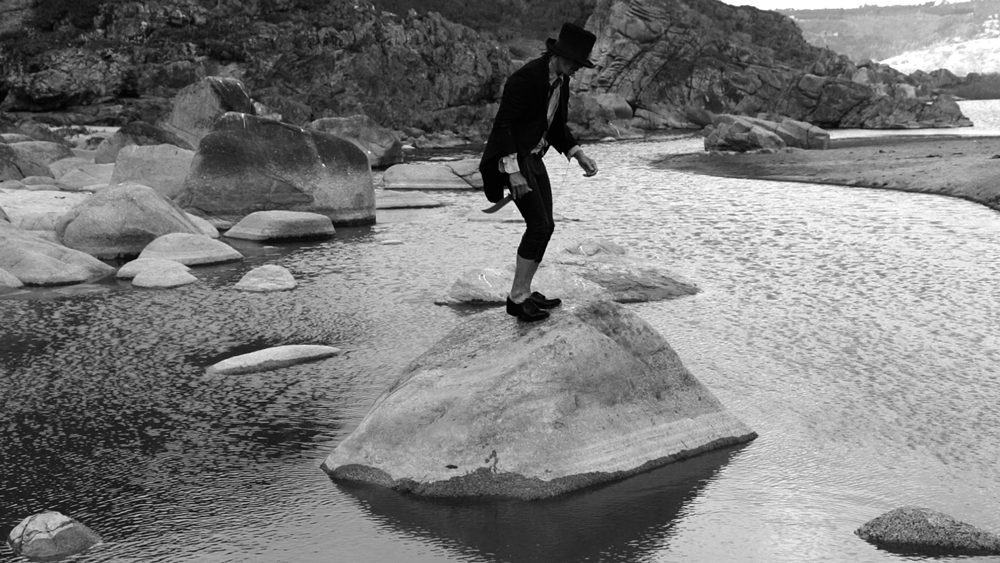
© » KADIST
Carlos Amorales
Carlos Amorales, based in Mexico City, works in many media and combinations thereof, including video, drawing, painting, photography, installation, animation, and performance. Central in his work is the construction and alteration of what he calls his Liquid Archive, a collection of images, narratives, drawings, shapes, and ideas that he uses to construct his unique visual language—a critical and stimulating space for fantasy, reality, and the blurring of the two. Amorales creates tensions between revealing and hiding the personal and the universal in his often-ambiguous and fluid constructions.

© » KADIST
Fang Lu
No World is an action-filled video work filmed inside an abandoned museum in the Songzhuang area outside Beijing. Without using any dialogue, Lu created an artificial scenario where she instructed actors with a list of tasks to gesturally mime scenes from news and journalistic images outside China. Through an intuitive self-trained mimicry, these acts simultaneously became moves in a game as well as a daily routine.

© » KADIST
Amor Muñoz
Yuca_tech: Energy by Hand is an installation by Amor Muñoz that resulted from a local technology lab in a small village in the Yucatán henequen zone, in the Mayan region of Mexico. The lab was designed as a community technology space that focuses on developing forms of production through collaboration rather than through capitalist means of production based on private ownership and driven by financial profits. More specifically, the workshop and activities of the lab merge Indigenous crafting techniques with open-source technologies and solar energy to create technology-based artworks.

© » KADIST
Mary Helena Clark
The Dragon is the Frame by Mary Helena Clark is an elegy that is somewhat paradoxically organized as a film noir or murder mystery, one that pays direct homage to Hitchcock’s Vertigo . But the parts don’t fit, and it is only in the eventual recognition of this faux raccord that Clark’s higher purpose becomes apparent. As we hear Bernard Herrmann’s score, we see the Golden Gate Bridge, Mission Dolores, and other Vertigo locations in the present day.

© » KADIST
Mona Marzouk
Trayvon is a series of acrylic paintings by Mona Marzouk that engages the courtroom as its points of departure. The courtroom as a space for the implementation of justice and of legal argumentation, but also through which different affective forces, some hegemonic and others marginalized, battle each other out in their respective quests for acknowledgment, accountability, and retribution. The work was produced at a time during which several popular revolts, such as in Egypt, seemed to have effectively been hijacked by reactionary forces, resulting in the violent dismissal of collective demands for emancipation, including through sham trials and wrongful convictions criminalizing activists, journalists, and protesters.

© » KADIST
Som Supaparinya
When Need Moves the Earth is a three-channel video that combines elements of documentary footage, archival material and abstract aerial shots to encompass a painterly yet forthright exploration of a coal mine and a water dam in Thailand. A meditation on the impact of industrialization on the natural environment, the work highlights the drastic alterations that these operations leave in its place. Som Supaparinya’s work is often a commentary on political, social, and personal issues.

© » KADIST
Gabriel Pericas
“Efficiency & Abyss 1” is part of a series of photographs of stacked chairs in an auditorium. The design of this chair makes stacking easy and rational. At the same time, this stack produces an optical effect that creates a shape resembling a tunnel or a subterranean passage.

© » KADIST
Annette Kelm
In Stilleben mid Zierlauch ( Still Life with Aluminum) Annette Kelm utilizes visual juxtaposition to bring together a gridded aluminum backdrop, a pot with a vaguely indigenous pattern on it, and two purple dandelions. The aesthetic dissonance between the mechanical, gridded aluminum and the grainy clay pot signify an interaction between systems of visual production, furthered by the aluminum grid’s inward tilt, visually apparent due to the grid pattern’s convergence at the top of the photograph. Contrasting the stark slant of the grid, the pot sits on a level surface, while the two tall stems protruding from it run at a non-parallel angle to the grid.

© » KADIST
Charles Lim
In SEA STATE 6 Charles Lim takes the viewer down the Jurong Rock Caverns in Singapore, a massive underground infrastructure for oil and fuel storage, built to support the commercial operations of oil traders, petrochemical ventures and manufacturing industries in the area. The first of its kind in Southeast Asia. Located at a depth of 130 meters beneath the Banyan Basin on Jurong Island, the Caverns provide infrastructural support to the petrochemical industry that operates on Singapore’s Jurong Island, a cluster of islets reclaimed into one major island and connected to the mainland in the 1980s.
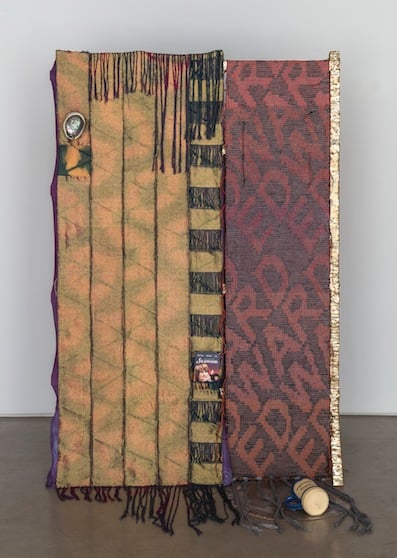
© » KADIST
Josh Faught
Some of Faught’s works have been inspired by the ad hoc monuments created at gravesites in San Francisco’s Neptune Society Columbarium, where many victims of the AIDS epidemic were laid to rest. The personal objects, mementos, and offerings left in the cemetery have become something of an archive of a particular moment in queer history and the gay community in the city. His 2014 sculpture, Edward , is part of a larger series of works that Faught has made to memorialize (or simply recall) his past lovers.

© » KADIST
Sara Eliassen
Sara Eliassen’s video work A Blank Slate (2014) employs cinematic effect to investigate the relationships between subjectivity, gaze, and memory. Set in a sleepy and unidentified coastal town, the film begins as the protagonist unexpectedly finds herself inside a hotel room in a lucid state. Attempting to grasp her surroundings, she falls into a deeper metaphysical reality where her memories blur with her awareness of her surroundings until she finds herself again alone in a dream-like state.

© » KADIST
Robert Zhao Renhui
Created during Zhao Renhui’s residency at Kadist SF in 2014, the photographic grid features a selection of some 6,000 members from single family of flies –hoverfly– identified over the last 25 years by Sacramento-based Dr. Martin Hauser, Senior Insect Biosystematist at the California Department of Food and Agriculture and longtime acquaintance of the artist. Worldwide specialist of hoverflies, Dr. Hauser collected the insect and meticulously sorted them out. The label below each fly indicates the country where it is from, its species, its size, etc.

© » KADIST
Yosuke Takeda
Yosuke Takeda gives the viewer brightly colored views, each of which he has searched out and patiently waited for. He gives light a density in the precise moments he captures—a forest’s leaves shimmering in the early morning, a street’s reflective surface radiating color at night, luminous blinds drawn over an apartment window. He achieves his distinctive effects by using an old, second hand analog-era lens that he attaches to his digital camera.

© » KADIST
Cheikh Ndiaye
Adjamé, Charbon reflects on both global environmental discourses and domestic impacts of the use and trade of coal. Adjamé is one of ten urban communes of the city of Abidjan, the economic capital and city with the largest French-speaking populous in the Côte d’Ivoire. Employing vibrant colors to contrast the plastic jerrycans, children toys and clothing strewn randomly throughout the shanty settlement with the darkness of coal is a challenging articulation of the image of progress and its environmental consequences today.

© » KADIST
Malik Nejmi
La Chambre Marocaine series is a means to reconnect personally to his connection to family history and objectively assess the process of reconnection. By creating this work in the Villa Medici in Rome, the neutral space—neither France nor Morocco—allowed the artist to distance himself with his history in the examination process. The series looks at Morocco through the eyes of his children and object belonging to his grandmother: a scarf, a cushion and a book in Arabic.
Xyza Cruz Bacani
Xyza Cruz Bacani is a Filipina author and photographer who uses documentary-style photography to call attention to less visible, erased, and under-reported global events...
Fabien Giraud & Raphael Siboni
The collaborative work of Fabien Giraud and Raphael Siboni is part of a reflection on the history of cinema, science, and technology...
Hank Willis Thomas
- location: New York, New York
- year born: 1976
- gender: male
- nationality: American
- home town: Plainfield, New Jersey
Zanele Muholi
- year born: 1972
- gender: female
- nationality: South African
- home town: Umlazi, Durban, South Africa
Zai Kuning
- year born: 1964
- gender: male
- nationality: Singaporean
- home town: Singapore
Mungo Thomson
- location: Los Angeles, California
- year born: 1969
- gender: male
- nationality: American
Gabriel Pericas
Gabriel Pericàs (b...
Charles Lim
Charles Lim Yi Yong’s work encompasses film, installation, sound, recorded conversations, text, drawing, and photography...
Arseny Zhilyaev
Arseny Zhilyaev is arguably one of the most influential contemporary Russian artists of his generation...
Mona Marzouk
Mona Marzouk is an artist whose practice is deeply rooted in a keen sense for architecture...
Shilpa Gupta
- location: Mumbai, India
- year born: 1976
- gender: female
- nationality: Indian
- home town: Mumbai, India
Gozo Yoshimasu
Gozo Yoshimasu is a prolific Japanese poet, photographer, artist and filmmaker active since the 1960s...
Robert Zhao Renhui
Robert Zhao Renhui’s multimedia practice questions fact-based presentations of ecological conservation and reveals the manner in which documentary, journalistic, and scientific reports sensationalize nature in order to elicit viewer sympathy...
Mithu Sen
Mithu Sen’s writing is central to her practice, as a poet from West Bengal, a region of great Indian literary history, poetic and visual tropes giving ground to her challenge of semiotics...
Carlos Amorales
- year born: 1970
- gender: male
- nationality: Mexican
- home town: Mexico City, Mexico
Mimian Hsu Chen
Costa Rica-based artist Mimian Hsu works with photography, documents, typography, and objects to construct site-specific installations, performances, and projects that explore intersecting cultural identities...
Uri Aran
Born in 1977 in Jerusalem Lives and works in New York...
Will Rogan
- location: Albany, California
- year born: 1975
- gender: male
- nationality: American
Bunny Rogers
Like many others of her generation, Bunny Rogers discovered herself through digitally mediated experiences on the Internet, finding outlets online that didn’t exist for her in the reality of her Texas upbringing...
Basma Alsharif
Basma Alsharif is an artist and filmmaker of Palestinian origin, born in Kuwait, and raised between France, the US and the Gaza Strip...
Marie Voignier
Marie Voignier’s work presents a subtle criticism of the transitory status of action within the social and political elds...
Li Binyuan
Li Binyuan explores physicality, chance, play and social values through actions, film works and performances that intervene in the social fabric of everyday Chinese society...
Little Warsaw
Artists András Gálik and Bálint Havas began developing projects together under the name Little Warsaw in 1999...
Juan Araujo
- year born: 1971
- gender: male
- nationality: Spanish
- home town: Caracas, Venezuela
Prabhakar Pachpute
Prabhakar Pachpute calls attention to issues concerning land politics, industry, and labor through a multimedia practice that includes drawing, painting, sculpture, animation, and murals...
Rossella Biscotti
Departing from social and political history, the work of Rossella Biscotti (b...
Thu Van Tran
Thu Van Tran grew up in the paradox of the dismantlement of the French colonial empire in Vietnam...
Lucia Madriz
Born in Costa Rica and living in Germany, artist Lucía Madriz has a global perspective...

